-
 bitcoin
bitcoin $114320.977035 USD
-0.40% -
 ethereum
ethereum $4152.439985 USD
-1.75% -
 tether
tether $1.000111 USD
-0.04% -
 xrp
xrp $2.843037 USD
-1.63% -
 bnb
bnb $1013.349380 USD
-1.62% -
 solana
solana $208.362767 USD
-2.10% -
 usd-coin
usd-coin $0.999783 USD
0.00% -
 dogecoin
dogecoin $0.232559 USD
-1.00% -
 tron
tron $0.333491 USD
-1.09% -
 cardano
cardano $0.806310 USD
0.19% -
 hyperliquid
hyperliquid $45.023720 USD
-1.59% -
 ethena-usde
ethena-usde $1.000819 USD
-0.06% -
 chainlink
chainlink $21.241249 USD
-2.11% -
 avalanche
avalanche $30.035416 USD
-0.66% -
 stellar
stellar $0.364984 USD
-2.05%
What are the types of stablecoins in DeFi?
DeFi relies on stablecoins, which maintain a $1 peg via various methods (fiat-collateralized, crypto-collateralized, algorithmic, non-collateralized), each carrying unique risks requiring careful consideration before investment.
Mar 16, 2025 at 02:30 pm
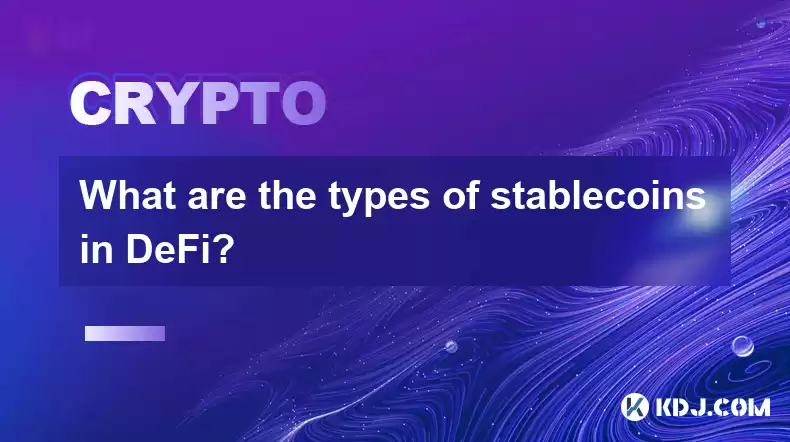
- Stablecoins are crucial for DeFi, providing price stability within a volatile market.
- Several types of stablecoins exist, each with its own mechanism for maintaining a $1 peg.
- Understanding the differences between these types is vital for navigating the DeFi ecosystem safely and effectively.
- Each type carries inherent risks, and users should carefully consider these before investing.
The Decentralized Finance (DeFi) ecosystem relies heavily on stablecoins to maintain price stability amidst the inherent volatility of cryptocurrencies. These assets aim to maintain a consistent 1:1 peg with a fiat currency, usually the US dollar. However, the mechanisms used to achieve this peg vary significantly, leading to different types of stablecoins. Understanding these differences is crucial for navigating the risks and opportunities within DeFi.
1. Fiat-Collateralized Stablecoins:These stablecoins are backed by reserves of fiat currency held in a bank account. For every stablecoin issued, an equivalent amount of fiat currency is held in reserve. This offers a high degree of stability, as the value is directly tied to a stable asset. However, this type relies on trust in the custodian holding the reserves, and the accessibility of those reserves for redemption. Audits are essential to ensure transparency and prevent fraud.
2. Crypto-Collateralized Stablecoins:Unlike fiat-collateralized stablecoins, these are backed by other cryptocurrencies. Users deposit a larger amount of collateral (often over-collateralized) to mint stablecoins. This over-collateralization acts as a buffer against price fluctuations in the underlying crypto assets. If the value of the collateral drops below a certain threshold, the system automatically liquidates a portion to maintain the peg. The complexity of these systems introduces operational risks.
3. Algorithmic Stablecoins:These stablecoins use algorithms and smart contracts to maintain their peg without relying on collateral. They often involve a dual-token system, with one token representing the stablecoin and another acting as a balancing mechanism. When demand for the stablecoin rises, the algorithm adjusts the supply, and vice-versa. The lack of collateral makes these stablecoins inherently riskier, as their stability depends entirely on the effectiveness of the algorithm. Failures have demonstrated the fragility of this approach.
4. Non-Collateralized Stablecoins:These are a relatively new and experimental type of stablecoin that attempts to maintain its peg without any collateral or algorithmic mechanisms. Instead, they rely on complex economic models and market forces to regulate supply and demand. The lack of external backing increases the risk significantly. These are often considered highly experimental and speculative.
Variations within Stablecoin Types:It’s important to note that variations exist within each category. For example, some fiat-collateralized stablecoins might use multiple banks or jurisdictions to diversify risk, while some crypto-collateralized stablecoins may accept a range of different cryptocurrencies as collateral. The specific implementation significantly impacts the risk profile of each stablecoin.
Understanding the Risks:Each type of stablecoin carries its own unique risks. Fiat-collateralized stablecoins face the risk of custodial failure or regulatory intervention. Crypto-collateralized stablecoins are vulnerable to market volatility in the underlying crypto assets. Algorithmic stablecoins have demonstrated inherent instability and are prone to de-pegging events. Non-collateralized stablecoins are the riskiest due to their reliance on untested economic models.
Further Considerations:The regulatory landscape surrounding stablecoins is constantly evolving. Governments worldwide are increasingly scrutinizing these assets, leading to potential regulatory uncertainty and implications for their use in DeFi. Furthermore, the smart contracts underpinning many stablecoins can contain vulnerabilities that could be exploited by malicious actors. Thorough audits and security reviews are crucial.
Common Questions and Answers:Q: What is the safest type of stablecoin?A: Generally, fiat-collateralized stablecoins are considered the safest, provided the reserves are properly audited and managed. However, even these carry risks related to custodial security and regulatory changes.
Q: Are algorithmic stablecoins reliable?A: No, the history of algorithmic stablecoins has shown a high degree of instability and vulnerability to de-pegging events. Their reliance on complex algorithms without collateral makes them inherently risky.
Q: How can I determine the stability of a stablecoin?A: Examine the backing mechanism (fiat, crypto, or algorithmic), the track record of the peg, the transparency of reserves (if any), and the results of independent audits. Always exercise caution and research thoroughly.
Q: What are the risks associated with crypto-collateralized stablecoins?A: The primary risk is the volatility of the underlying crypto assets used as collateral. A significant drop in the price of the collateral can lead to liquidation events, potentially impacting the peg.
Q: What is the future of stablecoins in DeFi?A: The future of stablecoins in DeFi is uncertain. Regulatory scrutiny, technological advancements, and the ongoing evolution of the DeFi landscape will significantly shape their role and development. Continuous monitoring and careful evaluation are crucial for users and developers alike.
Disclaimer:info@kdj.com
The information provided is not trading advice. kdj.com does not assume any responsibility for any investments made based on the information provided in this article. Cryptocurrencies are highly volatile and it is highly recommended that you invest with caution after thorough research!
If you believe that the content used on this website infringes your copyright, please contact us immediately (info@kdj.com) and we will delete it promptly.
- BlockDAG, DOGE, HYPE Sponsorship: Crypto Trends Shaping 2025
- 2025-10-01 00:25:13
- Deutsche Börse and Circle: A StableCoin Adoption Powerhouse in Europe
- 2025-10-01 00:25:13
- BlockDAG's Presale Buzz: Is It the Crypto to Watch in October 2025?
- 2025-10-01 00:30:13
- Bitcoin, Crypto, and IQ: When Genius Meets Digital Gold?
- 2025-10-01 00:30:13
- Stablecoins, American Innovation, and Wallet Tokens: The Next Frontier
- 2025-10-01 00:35:12
- NBU, Coins, and Crypto in Ukraine: A New Yorker's Take
- 2025-10-01 00:45:14
Related knowledge

How to track DeFi activity on a block explorer
Sep 04,2025 at 05:36pm
Bitcoin's Role in Decentralized Finance1. Bitcoin remains the cornerstone of the cryptocurrency ecosystem, serving as both a store of value and a benc...
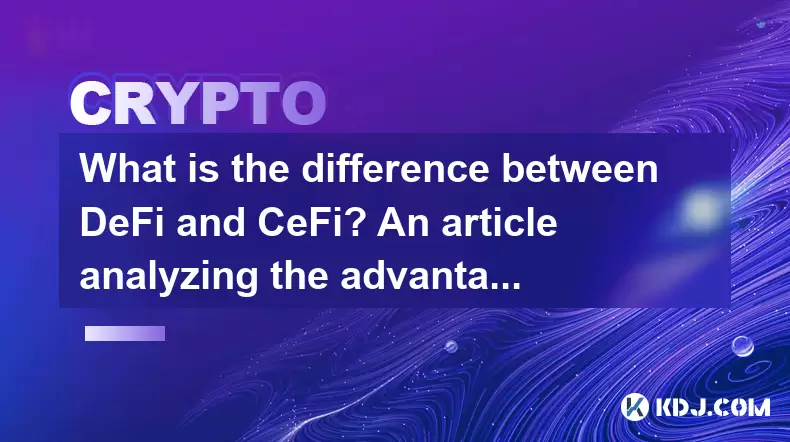
What is the difference between DeFi and CeFi? An article analyzing the advantages and disadvantages of both
Jun 13,2025 at 03:57am
Understanding the Foundations of DeFi and CeFiTo fully grasp the difference between DeFi (Decentralized Finance) and CeFi (Centralized Finance), it’s ...
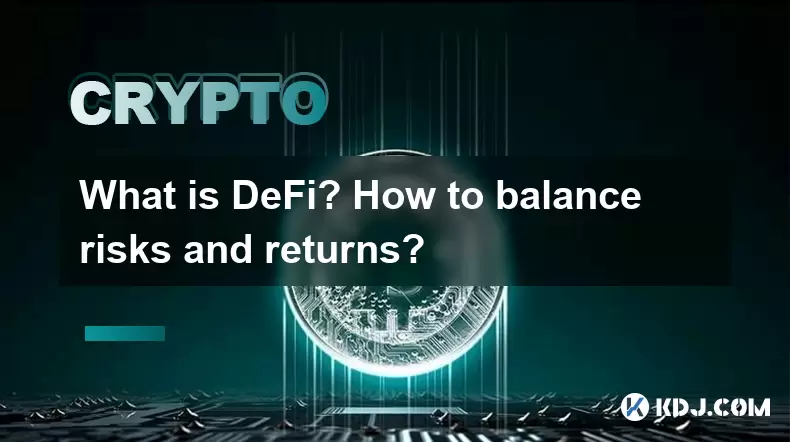
What is DeFi? How to balance risks and returns?
May 31,2025 at 12:22pm
What is DeFi? How to Balance Risks and Returns? Decentralized Finance, commonly known as DeFi, represents a revolutionary shift in the financial ecosy...
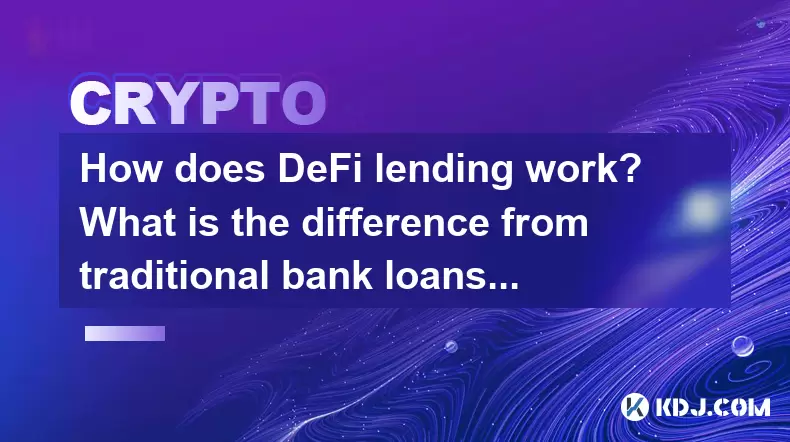
How does DeFi lending work? What is the difference from traditional bank loans?
May 29,2025 at 05:36pm
Introduction to DeFi LendingDeFi lending, or decentralized finance lending, represents a revolutionary shift in the way borrowing and lending are cond...
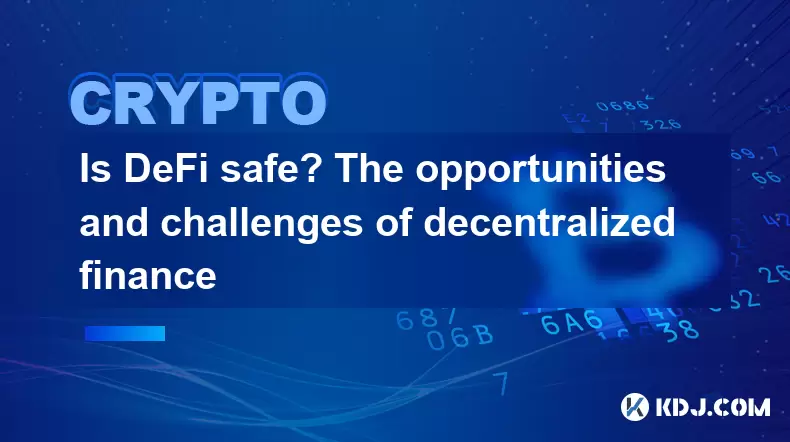
Is DeFi safe? The opportunities and challenges of decentralized finance
May 27,2025 at 02:28pm
Decentralized Finance, commonly known as DeFi, has revolutionized the financial landscape by offering a range of financial services without the need f...

DeFi Mining Tutorial: How to Maximize Profits and Reduce Risks?
May 27,2025 at 07:42am
DeFi, or Decentralized Finance, has opened up a new world of opportunities for crypto enthusiasts looking to maximize their profits through various mi...

How to track DeFi activity on a block explorer
Sep 04,2025 at 05:36pm
Bitcoin's Role in Decentralized Finance1. Bitcoin remains the cornerstone of the cryptocurrency ecosystem, serving as both a store of value and a benc...

What is the difference between DeFi and CeFi? An article analyzing the advantages and disadvantages of both
Jun 13,2025 at 03:57am
Understanding the Foundations of DeFi and CeFiTo fully grasp the difference between DeFi (Decentralized Finance) and CeFi (Centralized Finance), it’s ...

What is DeFi? How to balance risks and returns?
May 31,2025 at 12:22pm
What is DeFi? How to Balance Risks and Returns? Decentralized Finance, commonly known as DeFi, represents a revolutionary shift in the financial ecosy...

How does DeFi lending work? What is the difference from traditional bank loans?
May 29,2025 at 05:36pm
Introduction to DeFi LendingDeFi lending, or decentralized finance lending, represents a revolutionary shift in the way borrowing and lending are cond...

Is DeFi safe? The opportunities and challenges of decentralized finance
May 27,2025 at 02:28pm
Decentralized Finance, commonly known as DeFi, has revolutionized the financial landscape by offering a range of financial services without the need f...

DeFi Mining Tutorial: How to Maximize Profits and Reduce Risks?
May 27,2025 at 07:42am
DeFi, or Decentralized Finance, has opened up a new world of opportunities for crypto enthusiasts looking to maximize their profits through various mi...
See all articles










































































